So, you’ve been told to follow a low oxalate diet and to avoid all beans. If this news bummed you out and you are a bean lover, I have great news for you. Low oxalate beans DO exist! Beans can absolutely fit in a low oxalate diet.
*Please note that this post contains clearly identified affiliate links. As an Amazon affiliate, I may earn a small commission on qualifying purchases (at no extra cost to you).
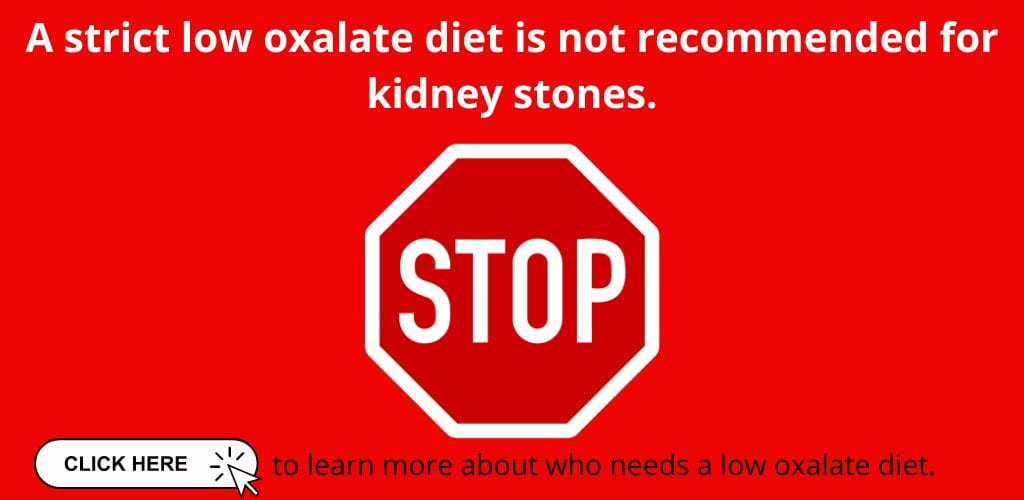
Table of Contents
Who Needs Low Oxalate Beans?
First, who should focus on low oxalate beans? Not everyone needs to follow a low oxalate diet.
Only people who have high urine oxalate need to limit high oxalate foods.(1) A 24-hour urine test is the only way to know if your urine oxalate is high. Remember, that eating enough calcium will help reduce oxalate absorption and prevent kidney stones too.
There is also much more to kidney stone prevention than oxalate.
More about who needs a low oxalate diet.
Benefits of Low Oxalate Beans for People with Kidney Stones
Some may wonder why not just avoid all beans on a low oxalate diet?
Beans provide numerous health benefits for kidney stones and beyond. If you like beans, I highly recommend incorporating some into your meals.
Animal Protein Substitute
Diets that are high in animal proteins like beef, pork, chicken, fish or seafood can cause kidney stones. (2)(3) So, swapping the animal protein for low oxalate beans and other plant proteins can help lower the amount of animal protein you eat.
Fiber
Beans are a fantastic fiber source! A 1/2 cup of black beans has 8 grams of fiber – about 25% of the fiber you need for an entire day! Fruits, vegetables and whole grains are also wonderful sources of fiber.
Fiber is an important part of a healthy diet. Fiber helps prevent heart disease, diabetes and some cancers. (4) Of course, fiber also helps keep us pooping regularly.
Better General Health!
Beans and other plant proteins such as nuts (yes! low oxalate nuts and seeds exist too!) are an important source of protein on a vegetarian or plant based diet.
Plant based diets are beneficial for heart health, diabetes and are even associated with lower mortality. (5) (6)
Low Oxalate Beans
So, which beans are low oxalate? Here are my top 10 favorite low oxalate beans.
Black Eyed Peas
3mg oxalate per 1/2 cup
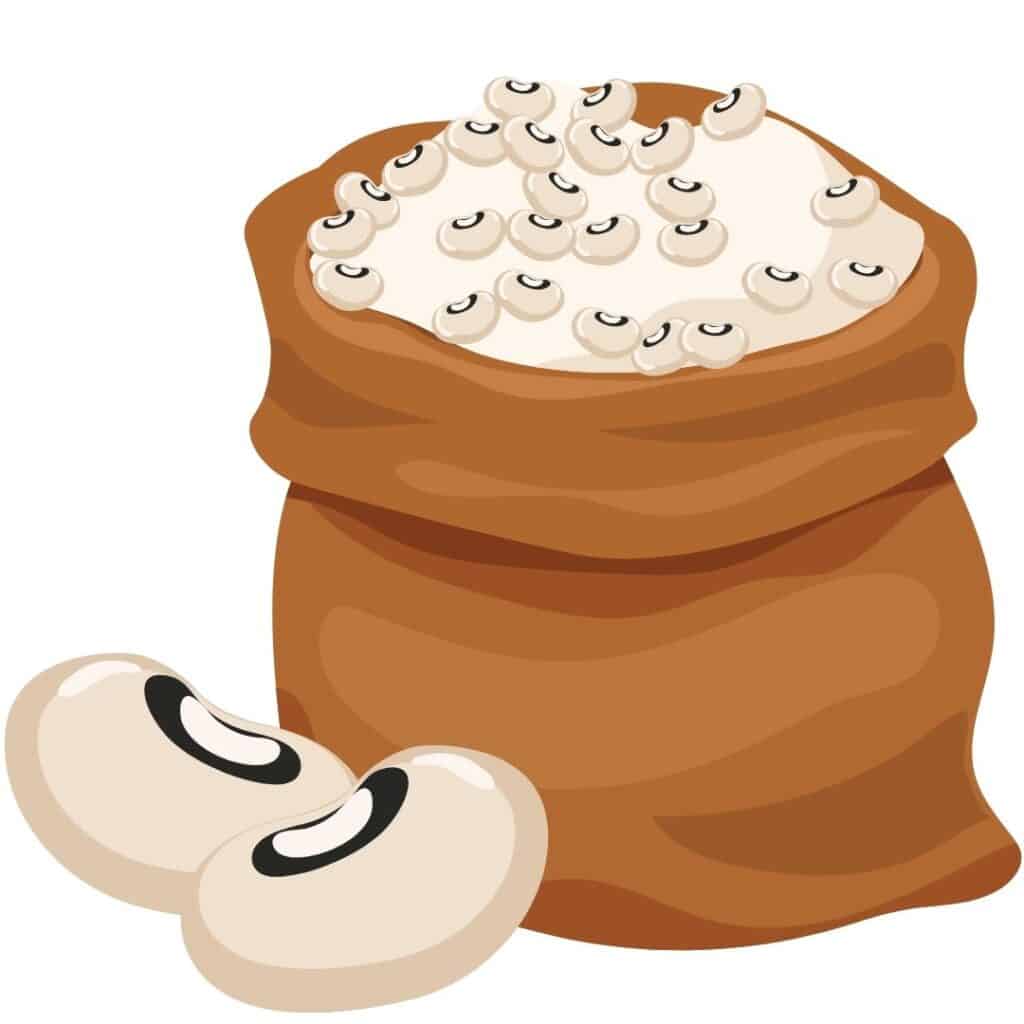
Often overlooked, black eyed peas are a wonderful low oxalate bean! Use them in soups, on salads or as a side dish.
I love this black eyed pea salad with peaches!
Garbanzo Beans
7mg oxalate per 1/2 cup
Garbanzo (aka chickpeas) are another yummy low oxalate bean. Make them into hummus (make your own and avoid very high oxalate tahini), soups or sprinkle them on salads.
Lentils
8mg oxalate per 1/2 cup
Green, red, black or any other color, lentils are a wonderful low oxalate plant protein option.
Try this Butternut Squash & Lentil salad!
Lima Beans
8mg oxalate per 1/2 cup
Never fear, lima beans don’t have to be gross mushy blobs. Lima beans can be delicious!
Succotash is my favorite way to enjoy these low oxalate beans.
Green Peas
1mg oxalate per 1/2 cup
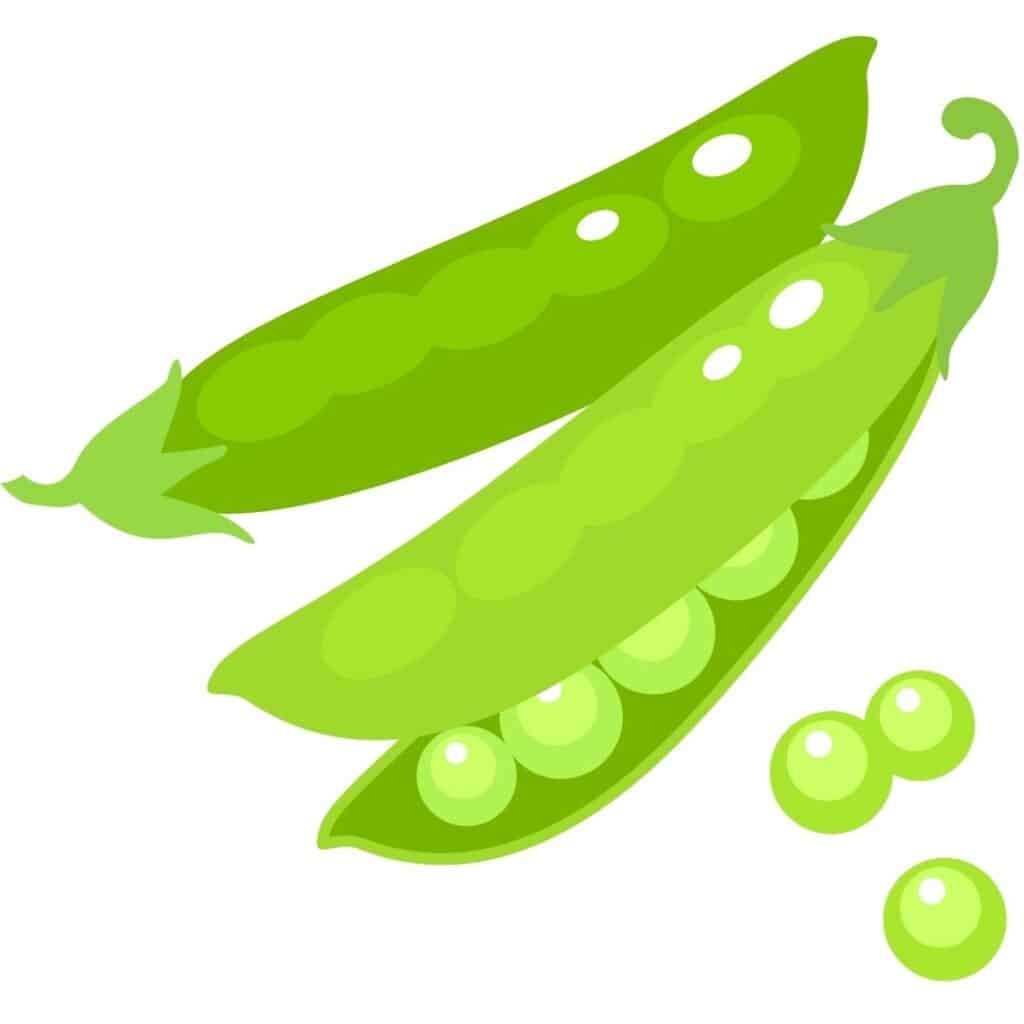
Although peas are not technically a bean, they have a similar nutrition profile. Green peas are a great source of protein (4 grams per 1/2 cup) and fiber (3.5 grams per 1/2 cup).
Look for fresh or frozen peas to keep them low sodium. Low sodium canned peas are great too!
Split Peas
5mg oxalate per 1/2 cup
Again, not technically a bean, but another great low oxalate plant protein. Make some infamous split pea soup (use low sodium broth and keep the added salt down).
Or, try these tasty crispy split peas.
Red Beans
14mg oxalate per 1/2 cup
Yep! Old fashioned red beans and rice is low in oxalate. With this classic entrée, watch out for tons of added salt and salty ingredients like sausage or ham.
Here is my favorite low sodium red beans and rice recipe.
Kidney Beans
15mg oxalate per 1/2 cup
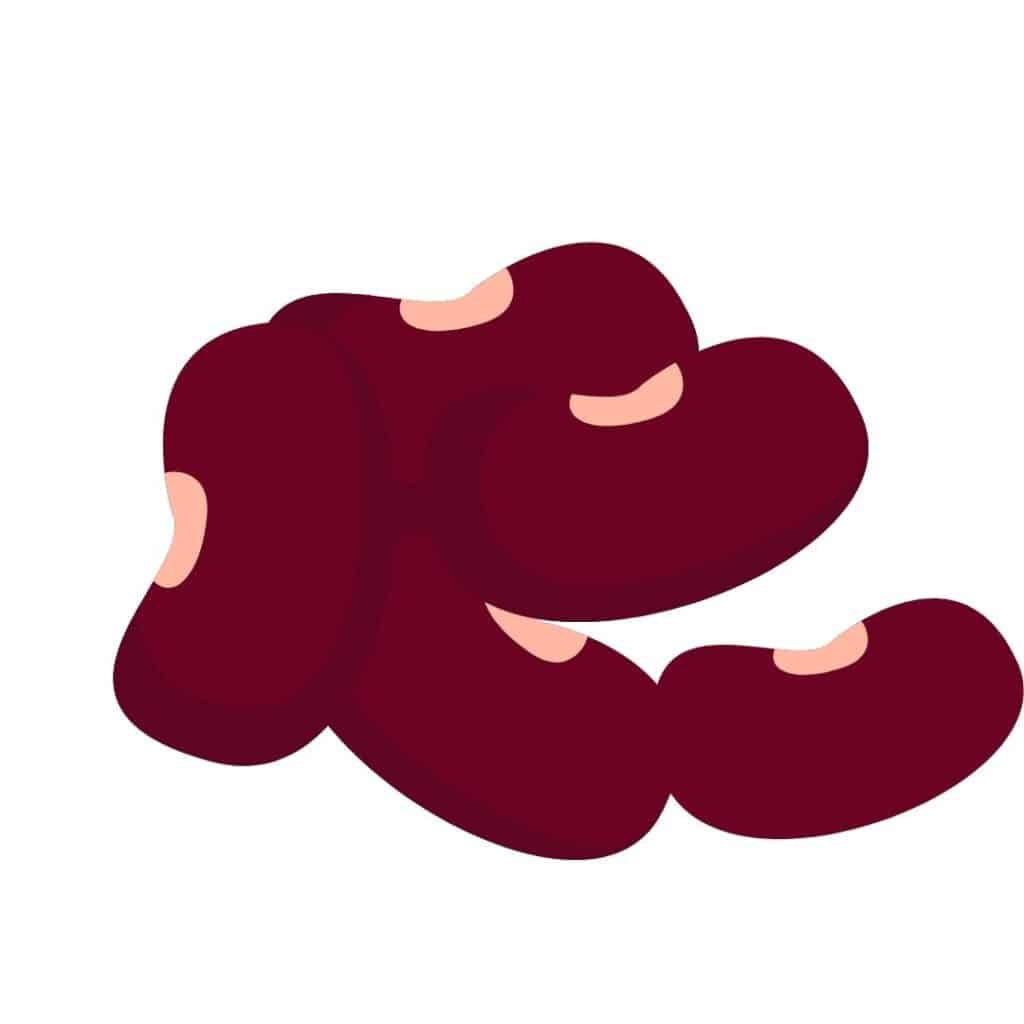
Kidney beans are a go-to low oxalate bean for me. Dried or low sodium canned kidney beans work here.
Add them to your favorite chili!
Broad (or Fava) Beans
10mg per 1/2 cup
Not as popular, but broad (or fava) beans are another low oxalate bean to try.
Try this asparagus and fava beans salad. Or, try a simple sautéed side dish.
Butter Beans
8mg per 1/2 cup
This one is a bit of a cop-out, because butter beans are just mature lima beans. But, I listed them as a separate low oxalate bean. Butter beans are just a completely different culinary adventure than lima beans!
Try this easy butter bean soup!
Other Low Oxalate Bean Considerations
Low Oxalate Bean Portions
Of course, a low oxalate bean can become a high oxalate bean if you eat enough of them. However, this is true of nearly any food!
Healthy portions vary based on your activity level, body size and how hungry you are! But, generally a portion of beans is around a 1/2 cup. The oxalate amounts given for all of the beans in this article are for a 1/2 cup portion.
Sodium in Beans
For most people, a low sodium diet is key to kidney stone prevention. Canned beans can pack quite a bit of sodium. Salt varies by brand, but a 1/2 cup of canned beans can have around 400mg of sodium! Look for “no salt added” or “low sodium” beans to keep salt in check.
Rinsing canned beans or other vegetables gets rid of about half of the salt.
Of course, dry beans are the easiest (cheapest!) and lowest sodium option. I love the quick soak method to save time. Or, cooking beans in a multi-cooker (aka “Instant-Pot”) is an amazing option too!
Pro Tip: Multi-cookers are great to cook big batches of grains to have on hand too! Here is the multi-cooker I use and love*.
Beans in sauce, such as baked or BBQ beans, also tend to have quite a bit of sodium. Beans cooked with smoked or processed meat such as smoked turkey, ham hocks, bacon or sausage, may also be on the salty side.
High Oxalate Beans
On the flip side, there are some beans that are very high in oxalate. If you have high urine oxalate, it is best to avoid these beans.
- Great Northern Beans (66mg per 1/2 cup)
- Navy Beans (76mg per 1/2 cup)
- White Beans (66mg per 1/2 cup)
- Soybeans (48mg per 1/2 cup)
- Black Beans (62mg per 1/2 cup)
Learn More About Oxalate
For more information about oxalate, check out these other articles:
- Who Needs a Low Oxalate Diet?
- Top 8 Reasons You Keep Getting Kidney Stones On a Low Oxalate Diet
- Low Oxalate Nuts & Seeds
- Top 25 Low Oxalate Recipes
- Low Oxalate Snacks
- Top 10 Low Oxalate Breakfast Ideas
- Nutrition for Calcium Oxalate Kidney Stone Prevention
Happy Eating!
Melanie

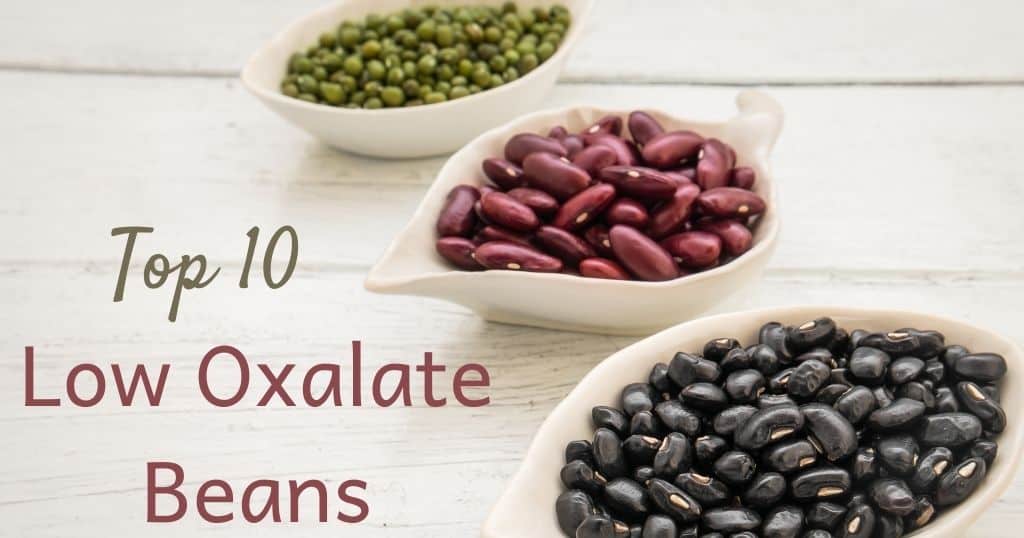
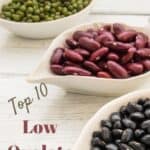
I saw other charts that have lentils at 38mg oxalate per cup. What’s your thoughts? Do oxalates Decrease after soaking?
Oxalate counts are notoriously inaccurate and different across different lists. This is one of the MANY reasons I really do NOT advocate for counting the amount of oxalate you eat diligently. I will say that lentils are generally considered on the lower oxalate side!
Very helpful.
You don’t need to have high urine oxalate to benefit from the low oxalate diet. I want to do a low ox diet because of chronic mild health complaints such as histamine intolerance and skin problems / eczema. I don’t want to resort to a high animal food diet. I want to keep up my habit of eating 1 cup of beans per day, and will choose them from this list. Thank you.
What is the difference between red beans and kidney beans? I thought red beans was just another name for kidney beans – certainly the Louisiana dish red beans and rice is made with kidney beans.
Although similar, they are actually a different kind of bean! This article talk about this a bit more!
Thank you for the informataion you share. I am impressed that you clarify the misinformation out there about many foods that have made humans afraid to eat them. I love beans, veggies, fruit, and nuts–and am a longtime whole food ethical vegan. And, although we all make our own choices, you have also told the truth about a diet of only animal protien and its’ connection to kidney stones (among other issues). cheers.
You are so welcome!
Hi there – thanks for this list. I’m wondering about the mg noted for these beans and how they were calculated / arrived at. I’m seeing differing information in other locations. For example, here https://pubmed.ncbi.nlm.nih.gov/29580532/#:~:text=Total%20oxalates%20were%20variable%2C%20ranging,soluble%20in%20all%20investigated%20pulses.
it says that:
“Total oxalates were variable, ranging from 244.7-294.0 mg/100 g in peas, 168.6-289.1 mg/100 g in lentils, 241.5-291.4 mg/100 g in fava beans, 92.2-214.0 mg/100 g in chickpeas and 98.86-117.0 mg/100 g in common beans”
Can you help, please? Also I am curious how much oxalates are reduced by soaking. Thank you.
Hello! I get all of my oxalate information from either the Harvard list, or a nutrition analysis software called NDSR. You’ll find wildly different oxalate counts from different sources. This article is certainly a reliable source! But know that oxalate (and most vitamin/mineral) amounts differ based on where food is grown, when it was harvested and how long ago it was picked. Notice that my portion sizes are very different than what is reported in that article as well, which likely accounts for the large difference.
Soaking food and cooking IN water likely reduces the oxalate content of most foods by about half. However, know that this also reduces the content of ALL water soluble nutrients, so you really want to make sure this is something that is necessary for you!
access to NDSR software costs about $ 6 000 per year. are you sure your have access to it?
Yes. I do.
Whatabout lupin beans? Need a high protein alternative to soybeans
I don’t have an accurate oxalate amount for lupin beans, unfortunately!
Hello. Very helpful information. I do need to limit my oxalate intake, so with that bit of background info out of the way, do you know the numbers for Adzuki beans? And, additional question, what about insoluble versus soluble oxalate. I have continued to read that insoluble oxalate is definitely less likely to be absorbed in the gastrointestinal tract, especially if the GI tract is healthy. What do you know about this, and with this in mind, is it accurate that soybeans are low in soluble oxalate? If soy is low in soluble oxalate does that not make it a relatively safer option for those who need to avoid high dietary oxalate?
Thank you.
Hello! I’m glad you found this helpful. I offer a more comprehensive list of oxalate content in my course, Kidney Stone Nutrition School. Insoluble oxalate would definitely be less problematic for exactly the mechanism you mentioned. However, it is nearly impossible to know how much oxalate is soluble vs. insoluble in foods. Quite frankly, it is nearly impossible to know how much oxalate PERIOD is in foods. So, this is not something I recommend people try to track or monitor. Quite frankly, tracking oxalate at all is not something I am super keen on due to the difficulty doing in, and the lack of research a low oxalate diet has any impact on health outcomes. I usually find there are other things going on in the diet that is causing kidney stones, or urine oxalate levels to be high, rather than oxalate intake from foods.
This is very old and not accurate information on Oxylate’s. I would suggest reading the work and findings of Sally K Norton. Plant based diets high in Oxylate’s does far more damage than it used to be thought.
There are no outcomes based research studies to suggest that plant based diets cause damage – in fact, very much the opposite. I am familiar with Sally Norton.
Sally Norton’s information is what is “old” as well as un-scientific. Saying something is different than showing something, and descerning it’s actual mechanism and context. Oxalate is actually one of the least concerning anti-nutrients. Not the most. Most of what is blamed on oxalate ingestion and the belief of build up and subsequent unusual secretion, has nothing to do with oxalate crystals. Furthermore, she makes completely inaccurate claims about things like cancer recovery in vegans, with no basis or back up. It would be nice if accurate research could be done on oxalate as it pertains to absorption and excretion in vulnerable people, but the work of Susan Owen and Sally Norton are not it. If concerned about oxalate binding calcium and other minerals in food, it’s easy to use low oxalate alternatives. Nowhere near impossible.
Hi Melanie. I’m a therapist and found this great site today. It’s a tool I ’ll recommend.
My question: For someone who is vegan (limited choices) and loves black beans, but had oxalate Kidney Stones 3x in the last 2 years: is it possible to still eat it once or twice a week if it was previously soaked for 2 days? Doesn’t *soak* impact significantly in the oxalate content reduction?
Thank you in advance and congrats for this amazing world wide contribution to humanity (I’m portuguese 🇵🇹 living in Angola 🇦🇴 and most my clients are Brazilians 🇧🇷, so you’re in those countries too, and certainly much more).
I’m so glad you found this helpful! Heat AND water will most reduce oxalate content, so boiling those beans will be most effective at reducing oxalate content. Of note, this also reduces ALL water soluble vitamins and minerals, so maybe isn’t the best way to go. I find most people are massively overdoing a low oxalate diet, and many people with stones don’t even need to be limiting oxalate. Only a 24 hour urine test will help a dietitian determine if a low oxalate diet is needed, and how often some of those higher oxalate foods can be enjoyed!
How good are pinto beans? I live in Houston with lots of Mexican food around and like refried beans.
Pinto beans are somewhere in the middle/low. You can find my complete oxalate list here!
But pinto beans aren’t on your list!
They are not because pinto beans were not tested by Harvard for our gold standard “Harvard oxalate list”. My other sources put them in the middle on the oxalate spectrum.
I have the same question, question I live in Houston and love pinto beans, are they high in oxalates? If they are what would be a similar bean that I can eat?
I would love to make an oxalate-friendly version of baked beans. Traditional baked beans are usually made with navy beans. Would you know of a recipe that uses a lower oxalate bean? Thanks!
I don’t have one readily handy – but I bet you could easily sub out those navy beans with some of these lower oxalate bean choices!
I have lichen sclerosis and suffer with kidney stones. There is hardly anything left for me to eat that doesn’t affect one or the other. I also have constipation issues, so I’m down to grass and water! (ha ha) thanks for your information; very appreciated. Betty
Aw Betty I really feel for you 😩 i am addressing my diet because of illness and loosing all the foods I love, it’s quite depressing 😩 good luck to you 🙏
Can you have microwaved string beans on an oxalate diet and how much?
Hi Susan! String beans are generally a low oxalate food. I cannot say how much is right for you without knowing more about your medical history and current eating habits. I’d ask a dietitian to understand what is best for you.
Where do cranberry beans fall? There are not as common.
Cranberries tend to be very low oxalate. Make sure to check out this article about who needs to follow a low oxalate diet!
Thank you for your response. I am asking about cranberry beans. The legumes. Sometimes they are called Roman beans, I read. I was wondering if they have been tested for their oxalate content. They are not a commonly eaten bean in the USA.
Hi Chaz! Unfortunately, I don’t have a reputable oxalate content for cranberry beans.
Hi. I am confused. The website oxalate.org shows lentils to be a high oxalate food. A mere cup of lentil soup contains 38 mg of oxalates, according to the Harvard 2008 study. This website says 16mg per cup (8mg per half cup)of lentils, and we can surmise Lentil soup contains water, and other ingredients besides lentils. Which study did the 8mg estimate come from?
Hi Lisa! I get all of my oxalate information from the Harvard list. There is a TON of inaccurate oxalate info out there, and the Harvard list is generally accepted as one of the most accurate. I’ve standardized the portion sizes from the Harvard list to make my list on my resources page if you want to check it out.
It is also SO important to not stress out about exact numbers of oxalate – it is virtually impossible to have exact numbers since oxalate differs by location, time of and times since harvest. Oxalate is usually the LEAST of my concerns when working with people who have kidney stones.
I looked at the most recent Harvard list thoroughly many times. Lentils, lima beans, butter beans, black eyed peas, and chickpeas are NOT even listed on the Harvard list. Kidney beans are 15 mg per 1/2 cup, but Fava beans are 20 mg not 10 mg per 1/2 cup. So, again, how did you determine these are low in oxalates?
Hi Sharon! I use the Harvard list as my first line of info for oxalate. For items not on that list, I use a nutrient analysis software called NDSR that is commonly used for nutrition research.
Lentil soups contain potatoes.
Lentil soup doesn’t always have to have potatoes in it! Also, potatoes can be a very kidney friendly food for most people. 🙂
Hi Lisa, lentil soup might also contain spinach in addition to the potatoes Wendy mentioned, so that’s almost certainly the reason it’s higher than plain lentils.
Must I eat calcium at the exact time I eat a low-oxalate food, or can I have the calcium within 20 min. of the low-oxalate food.
I have had 19 kidney stones, so I would be most grateful for your response.
Thank you.
Gail
Hi Gail! Everyone is different, but if your urine oxalate is high, it is best to try to pair at least most of your calcium with meals. You can learn more about calcium and kidney stones (including the timing of it!) here!
Most of these values are not in your oxalate food list (thanks for that list by the way) Where do these values come from? Thanks for your attention.
Hi Tom! For oxalate amounts for foods not on the Harvard list, I use a nutrition analysis software called NDSR. This is a program commonly used for nutrition research.
Thank you, Melanie.
Very encouraging! How about including these values in your “Oxalate List with Guide”?
Hi Larry! Great suggestion. I do update the oxalate list on occasion. I’ll include these in the next rendition!
thanks for quick reply!
how many milligrams in pinto beans?
Pinto beans are somewhere in the middle. About 20mg per a 1/2 cup of cooked pinto beans.
I have been trying to find out––in vain––what the oxalate level is in lupini beans. Does anyone here know?
Hi Natasha! Unfortunately, I also have no idea! I wish I could help!
We cook Indian vegetarian food. Can you tell me anything about toor Dahl or mung Dahl?
Any type of lentil is a great low oxalate choice!
I wanted to know also…so I researched and mung beans (Mung dahl) are medium oxalate with 7.9 mg oxalate per half cup, and pigeon peas used in Toor dahl are also medium oxalate at 7 mg per half cup. -Hope this is helpful.
Hi, is the portion size of beans(1/2 cup) based on cooked or uncooked?
Hello! Great question! All of these values are based on a 1/2 cup of COOKED beans.